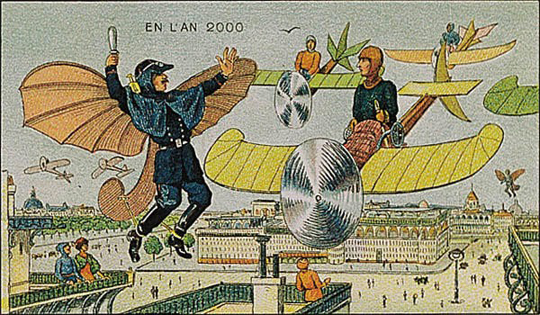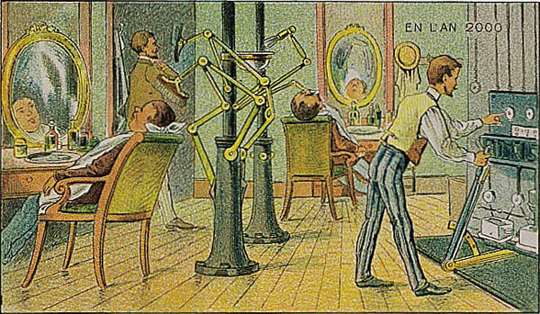 Where is my jet pack? Why can’t I live forever yet? And where is my Technological apocalypse?
Where is my jet pack? Why can’t I live forever yet? And where is my Technological apocalypse?
Friday saw the launch of the new issue of I’Science magazine. It has been entitled the “Great Expectations” issue. It looked at what science has promised us in the past and how close we are to full filling those predictions. You can check it out here.
To celebrate the release of the issue I am going to share an art project which I happened across a few weeks ago. It is a set of prophetic illustrations by the French artist Villemard. He produced them in 1910, intending to show what life would be like in the year 2000. Some of his predictions are remarkably accurate and others are just plain odd.
1)

Prediction: Appears to be a primitive version of video calling
Exists in the 21st Century: Yes, and has been around in various forms for decades.
2)

Prediction: Flying cars and flight suits
Exists in the 21st Century: No, although not from lack of trying
3)

Prediction: Computer aided design
Exists in the 21st Century: Yes, and with the rise of the 3D printer only likely to become more prevalent and publicly available.
4)

Prediction: A Matrix-esque method of learning
Exists in the 21st Century: No, still only in science fiction. Although it could be argued that this is image is an allegory for Wikipedia.
5)

Prediction: A sort of boat, airship crossbreed
Exists in the 21st Century: No, I’m pretty sure these don’t exist!
6)

Prediction: An automated hairdressers
Exists in the 21st Century: No, the closest we have come to this prediction is the electric razor.
7)

Prediction: Automatic Make-up
Exists in the 21st Century: No, although versions of this can be seen in the Fifth Element and The Simpsons.
8 )

Prediction: Electric roller skates
Exists in the 21st Century: These do exist
Share this post with the world:


























